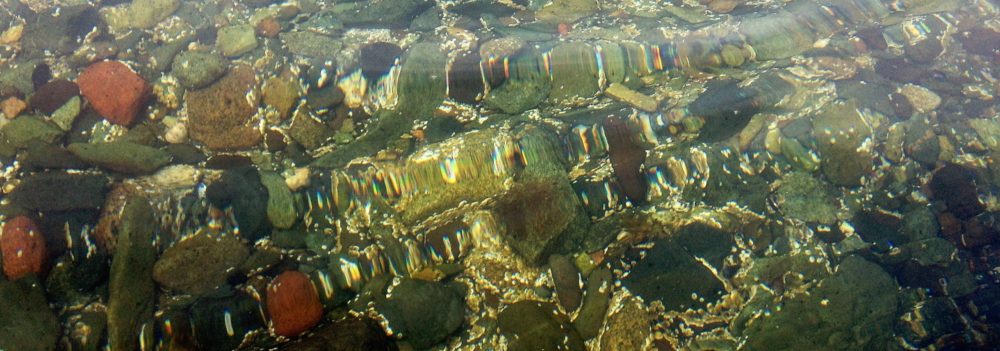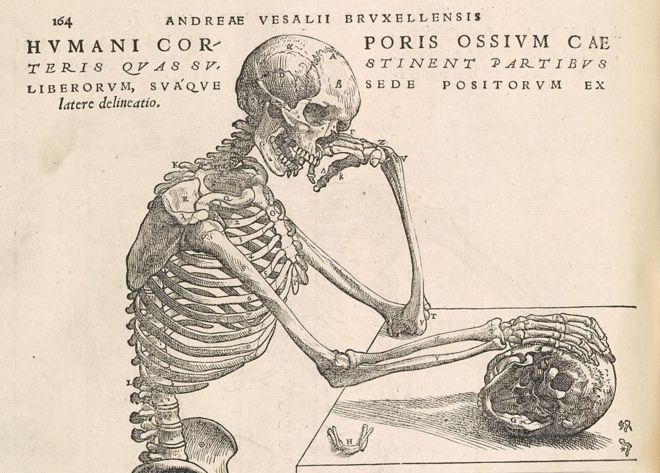
Why do we need bones anyway? The octopus does just fine without a skeleton. In fact a skeleton would cramp its style. You don’t start with a bony skeleton. While you were floating in your mom’s womb you had a soft skeleton of cartilage, just like the fish from which we evolved. So what happened? The salt water fish started to exploit a new environment – fresh water. They swam up the rivers since fish gotta’ swim, as the old saw says, and there they encountered a problem. There was not enough calcium in the water, and whether you are a fish or a frog or a person you need calcium to live. Without it you can’t do nerve impulse transmission or muscle contraction or blood clotting. Long story short without calcium you would be dead before you hit the floor. Seawater has plenty of calcium. In the ocean you easily absorb it through the food and even from breathing through the gills so it’s never a problem. Certainly not for a pufferfish.
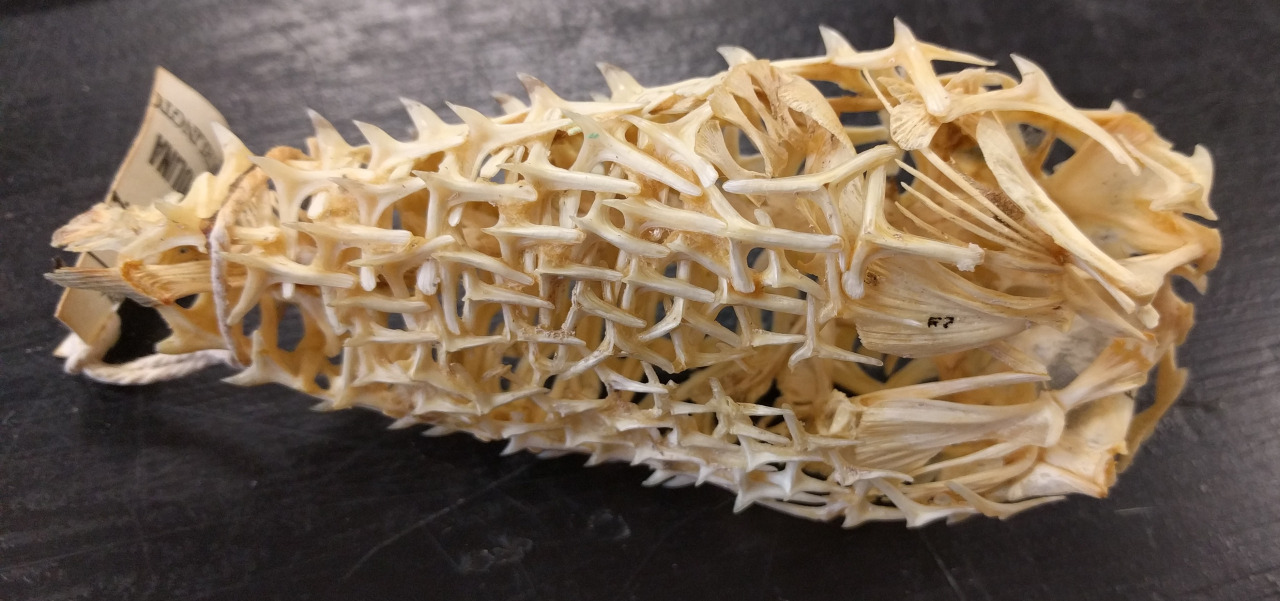
But in freshwater you can’t rely on a constant source. If you want to make it as a freshwater fish you’ve got to have some reliable way to store calcium for times when you can’t get any – a calcium bank as it were. So some fish adapted by storing calcium in their skeleton. They also came up with calcitonin and parathyroid hormone which keep the blood calcium levels balanced by making calcium deposits or withdrawals from the bone calcium bank. To this day, purely salt water fish like sharks have a cartilage skeleton, and freshwater fish like salmon and trout have a bony skeleton like us.

For more on this picture see “The most beautiful science book ever.”
Another quality of a bony skeleton is rigidity. You can resist gravity. One fine day a fish hauled itself on land, and that gave rise to the amphibians, then the reptiles, then the mammals. It is ironic that in fixing a problem so they could survive in fresh water, the fish came up with a solution that allowed them to leave the water completely. In a way, we are all fish out of water. But that’s the way evolution works. There is a challenge. You find a solution or you die out. Often that solution opens up whole new possibilities that take life in a completely different direction. Dinosaurs invented feathers for insulation, and we still use feathers for that today. But feathers also allowed for flight, which gave its owners the edge they needed to survive the great extinction that knocked the other dinosaurs out. The only living dinosaurs you see today are in the sky.

There is a disadvantage to bones reinforced with stones. Calcium is heavy and it costs a lot of energy to move that bony skeleton around. If the bones were solid mineral they would be a lot stronger, and three times heavier than they are. Imagine dragging that across the planet’s surface every day. Therefore the body wants the skeleton to be strong, but only as strong as you need it to be. There are teams of osteoblasts (which increase the bone matrix) and osteoclasts (which break down the bone matrix) constantly altering the structure of bones to make them only as strong (and heavy) as is absolutely necessary. How do they know what is strong enough? Electrical fields. The bones are piezoelectric, meaning when a force it applied to them (like supporting your body) they generate electrical fields. That stimulates the osteoblasts and osteoclasts to strengthen or lighten the bones to match the forces they are generally exposed to and trim away excess mass. In the following pictures you can see the lines of force that run through a bone by the lines of reinforcement in the matrix. Those little beams of bone (called trabeculae) are not laid down randomly, they are built to resist that force. In this picture of the interior of the head of a femur I’ve drawn in lines tracing where the main force is directed. The weight comes off the pelvis and is directed to the shaft of the femur much like the weight of a cathedral roof is distributed to the walls. The bones even use little gothic arches, visable in the shaft toward the bottom of the picture. The patella, on the lower right shows no such organization becasue forces on the patella are evenly spread around.
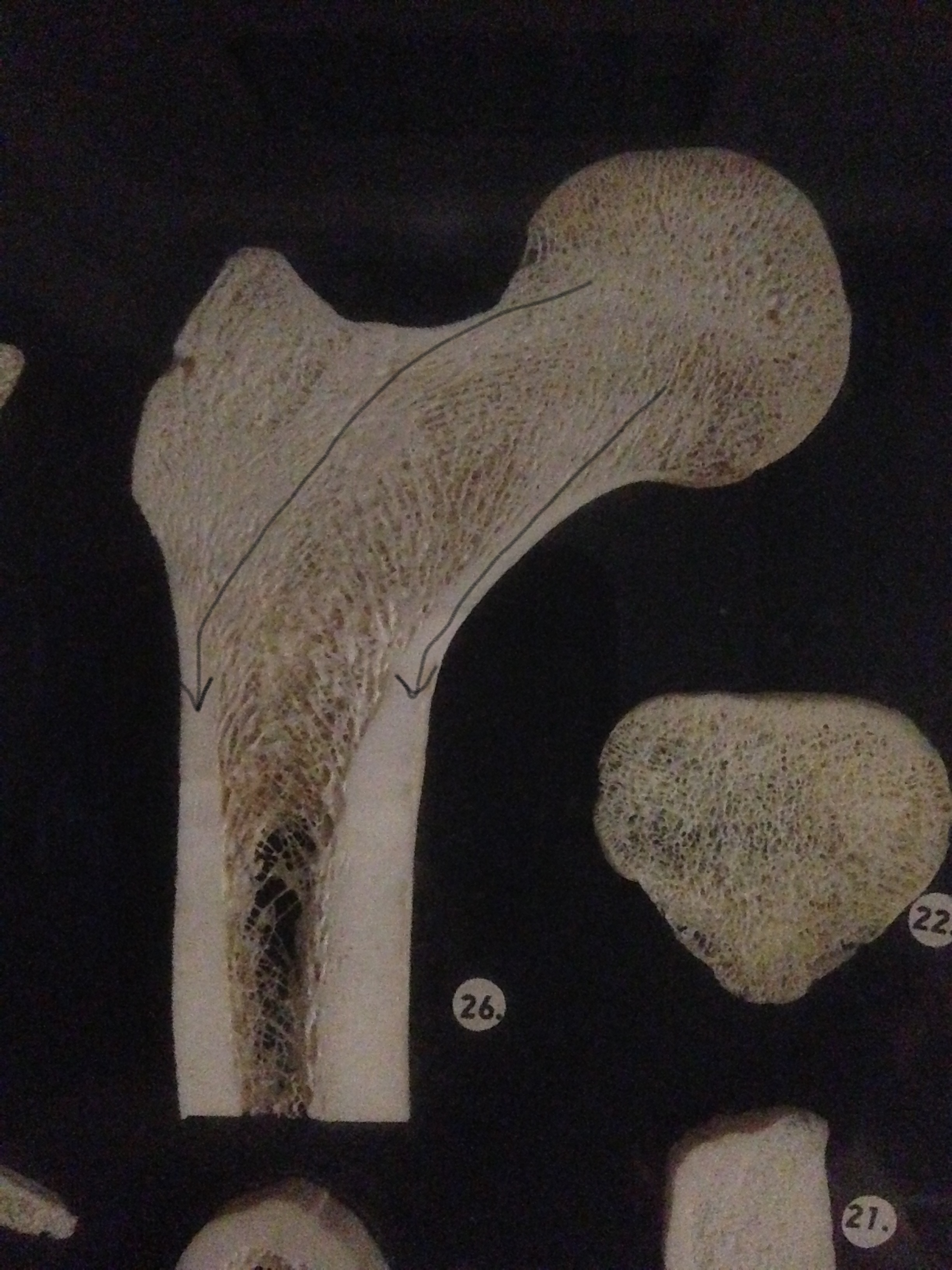
Xrays reveal the same internal structure for the femur as it takes the weight off the pelvis.
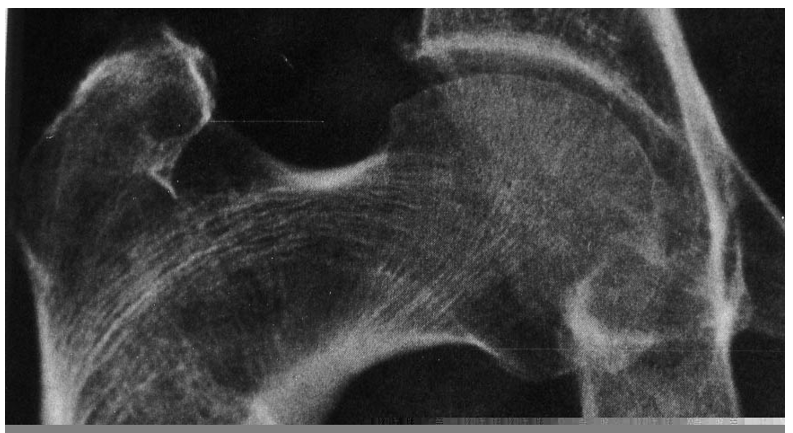
In this picture of the calcaneus (heel bone), the lower left is almost solid bone material because that is where the heel strikes the ground. The shock is then transmitted up and to the right, indicated by the arrows. Another arrow traces lines of force from the lower right where the calcaneus attaches to the plantar fascia, supporting the arches of the foot. This line sweeps up in a big curve much like the cables on a suspension bridge. The arches are suspended by tension in the bones and fascia. The right central part of the bone is almost hollow as there is no need for strenght in an area that gets little force.
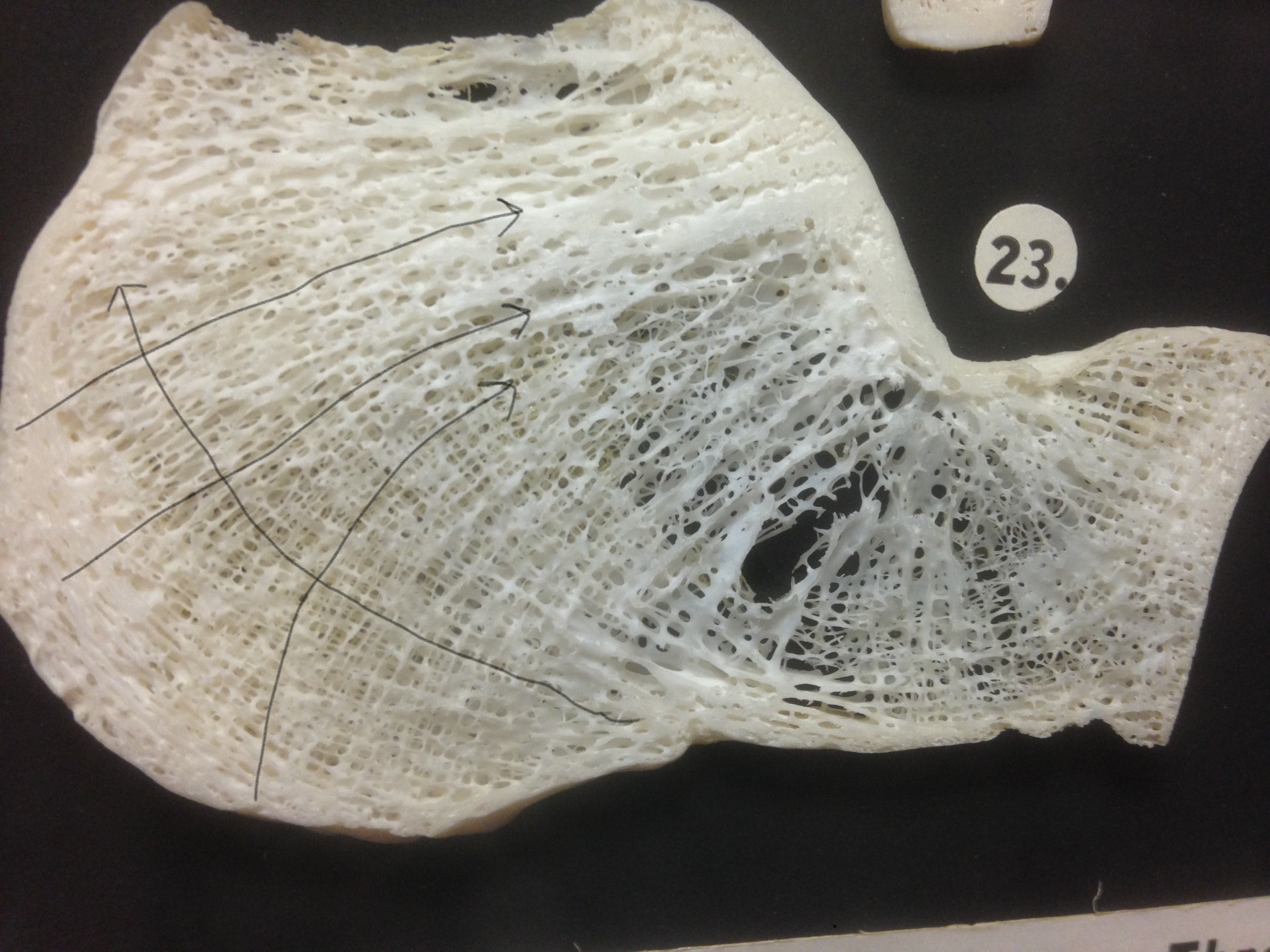
If you work out you put more force on the bones and muscles and they get heavier and stronger. Less force, less strength. On the space station there is almost no gravity and the bones suffer from severe osteoporosis.
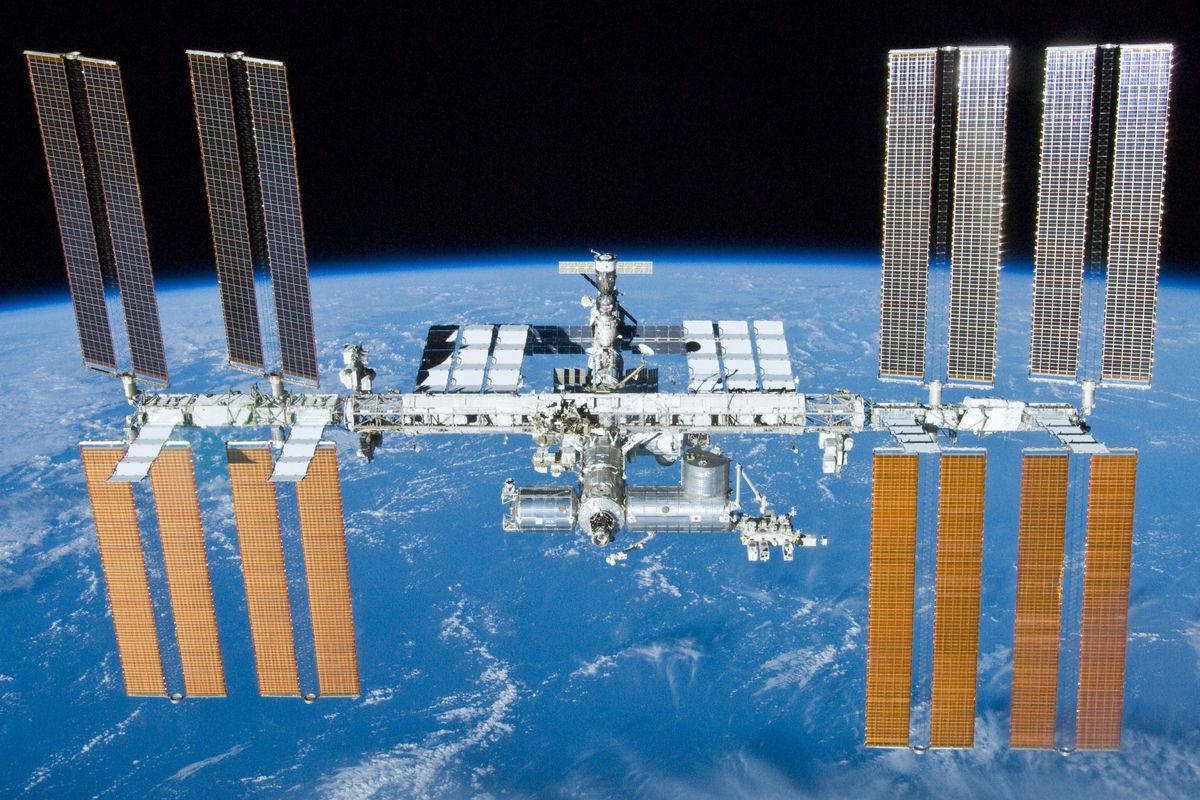
By the time the astronauts come down they have almost no bones left and they have to be carried off the capsule. Once under the pull of gravity the bones rebuild (mostly.) Your whole skeleton – every cell, every fiber, every grain of mineral – is replaced over the course of about two years.
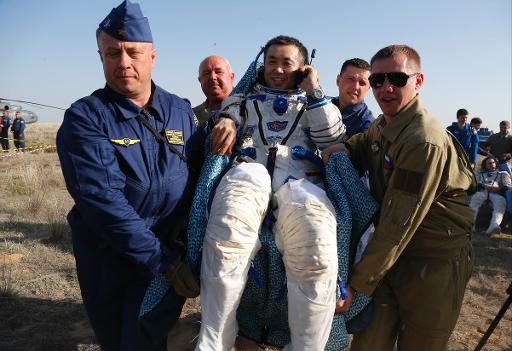
Bones will adapt to whatever you are doing. If you exercise they get stronger, if not they weaken. An added bonus to regular exercise is that when osteoblasts are stimulated they release hormones that create proteins that aid the hippocampus – the main engine of memory. This may be why exercise has long been linked to improving memory.

Jogging jogs your memory.
